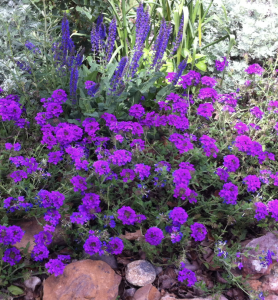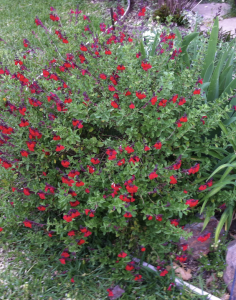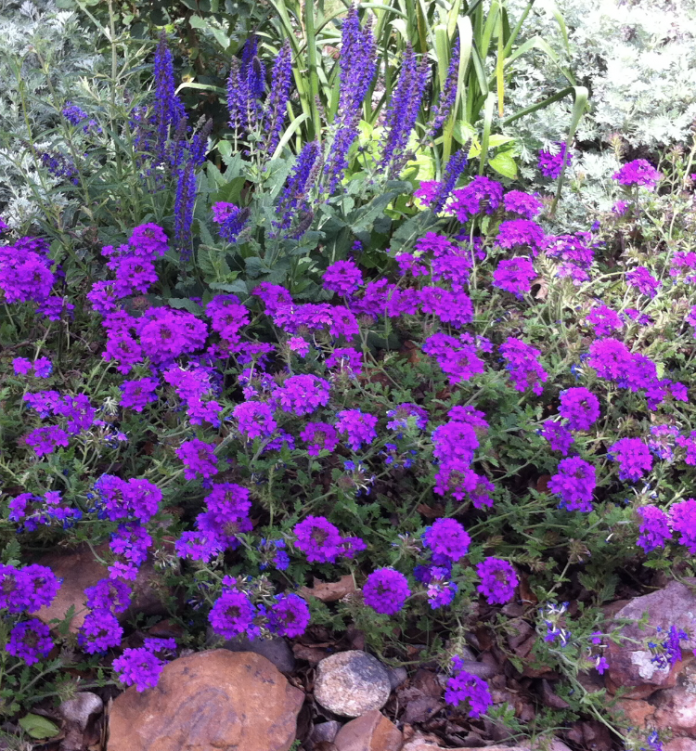
By Ellen Diers and Sharrie Ely, Denton County Master Gardener Association
As another long, hot Texas summer continues, this is a great time to investigate water-saving techniques for your landscape.
North Texas is a challenging environment for those who want a beautiful landscape that does not require thousands of gallons of water. Most Texas landscapes are over-watered, over-fertilized and over-applied with pesticides, all of which can be detrimental to water resources and to your landscape – not to mention your pocketbook!
An established landscape of water-wise native and adapted plants can survive our hottest summers with as little as 1” of water per week. Overwatering causes fungus in your turf, weak shallow root systems on your plants and shrubs and it costs you money.
Your irrigation system controller doesn’t offer that plethora of times and days because your landscape needs frequent watering. It is merely offering you the luxury of choosing what day and time you would like to water. Watering for 3-5 minutes per station per cycle is plenty and allow at least two hours between cycles so that the water can soak into the soil. Watering during the evening and at night is best to prevent evaporation. Check your irrigation system regularly to make sure you do not have broken lines or missing heads that can result in massive water waste.
You might also want to explore rainwater harvesting. Rain barrels and cisterns are a great way to divert, capture and store rainwater for later use in your landscape. This helps reduce the demand on municipal water supplies, is an efficient use of a valuable resource and saves you money by reducing your water bill.
Rain barrels and cisterns are made of various materials – polyethylene, fiberglass, wood or metal – even concrete. You can start small with one rain barrel and expand as you have the need and budget. Check the Texas A&M AgriLife Water University website for additional detailed information.
Healthy soils cycle nutrients and reduce runoff and have the potential to absorb pollutants. Adding amendments to our challenging soil is the foundation of a water-efficient landscape. Amendments like compost and expanded shale add nutrients and prevent soil compacting that prevents air and water from permeating the soil.
My favorite amendment is compost. Compost is made of broken-down organic material like leaves, grass and vegetable scraps. So simple, but what a big impact. You can incorporate a 2” dressing of compost into new beds before planting or rake a 1/4” to 1/2” top dressing into existing beds and even over your lawn. Spread a top dressing around newly planted trees or shrubs before adding mulch.
Now that your soil is ready, how do you choose plants for your landscape that will thrive in our hot summers and often cold winters? Native and adapted plants are excellent choices. They are drought tolerant, heat tolerant and require less water, less fertilizer and fewer pesticides. What a great combination!

One of the most popular plants is Salvia Greggii. This is a lovely mounding shrub that sports brightly colored blooms from late spring until late fall. It can be periodically trimmed to fit its space and will respond with a new flush of blooms. Salvia blooms in almost more colors than I can list – hot pink, red, blue, purple and white to name a few.
Texas Native Skullcap, Hardy Hibiscus, Beebalm, Rock Rose and many herbs are also well suited for our North Texas climate and don’t require excessive watering. Once established, these plants will do well with as little as 1” of water a month.
There are several excellent references to help you find water-wise plants for north Texas. The Lady Bird Johnson Wildflower Center offers an extensive location-based list. My favorite resource is the Texas A&M AgriLife Water University “Best Plants for North Texas” list found on their website .
Once your plants are chosen and installed, add a 3”-4” layer of shredded hardwood mulch over the tops of the beds. This will help retain moisture, cool the roots and prevent weeds from encroaching on your hard work. The mulch will break down over the seasons and provide nutrients to your plantings.
As Denton County continues its explosive growth, it is important for us to be responsible stewards of our precious natural resources, especially water. Do your part by selecting water-wise plants, using mulch and watering responsibly. Happy Gardening!
Denton County Master Gardener Association/Texas A&M AgriLife Extension – Denton County can be reached at [email protected] and (940) 349-2883.



















